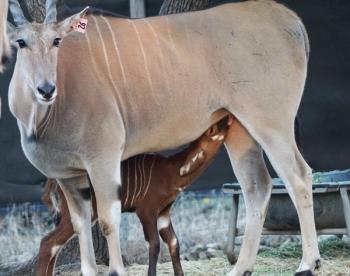
Gastrointestinal motility disorders (Proceedings)
Primary motility disorders of the gastrointestinal (GI) tract in the dog and cat are not well studied.
Primary motility disorders of the gastrointestinal (GI) tract in the dog and cat are not well studied. We know how to identify the specific syndromes and in some cases provide treatment but the etiology of the problem is still a mystery. Primary causes of motility disorders of the GI tract include congenital and idiopathic megaesophagus, gastric retention/delayed emptying and idiopathic megacolon. There is genetic predisposition to some of these disorders as certain breeds are over-represented. Secondary motility disorders of the GI tract in the dog and cat are due to mechanical or functional causes. Causes of mechanical dysfunction include GI obstructions such as intussusceptions, strictures, tumors, foreign bodies and vascular ring anomalies. Functional causes include severe inflammation of the intestinal wall, reflux esophagitis, esophagitis, acquired megaesophagus, endocrine disorders such as Addison's and Hypothyroidism, metabolic disease, neuromuscular disorders, paraneoplastic syndrome, toxins, and drugs such as anticholinergics and narcotics. Diagnosis and treatment of these disorders varies with each different syndrome with secondary motility disorders having a better prognosis if the primary cause can be improved or resolved. Motility drugs can be of benefit but are still limited in ability to completely reverse GI motility disorders.
GI Motility Disorders of the Esophagus
Megaesophagus (congenital and acquired)
Congenital
Esophageal hypomotility is suspected as the cause of congenital megaesophagus. Dogs by far present with this syndrome more commonly than cats. Some patients have hypomotility due to delayed maturation of esophageal function that may or may not improve with age. Congenital myasthenia gravis may cause congenital megaesophagus however congenital myasthenia gravis does not usually respond to treatment. Breeds predisposed to congenital megaesophagus are Newfoundlands, Jack Russell terriers, Samoyeds, Springer spaniels, smooth fox terrier and the Shar pei. Most puppies and kittens begin to show signs of regurgitation at weaning when they are started on solid food about 4 weeks of age. Diagnosis is by thoracic radiography and/or an esophagram (barium study) showing a diffusely dilated esophagus throughout the cervical and thoracic esophagus. Other congenital conditions such as vascular anomalies (persistant right aortic arch) can also cause megesophagus and diagnosis is a dilated esophagus cranial to the heart.
Acquired
Most patients with acquired megaesophagus are idiopathic with no underlying cause identified. Mostly this disease is seen in the dog although the cat with dysautonomia syndrome can present with megaesophagus. Although the exact etiology of acquired megaesophagus is unknown it is suspected that there is a defect in the afferent neural pathway causing reduced responsiveness of the esophagus to distention thereby limiting peristaltic contraction. Most patients present as adults although acquired forms can occur in the young. Acquired megaesophagus with primary causes include acquired myasthenia gravis, hypothyroidism, hypoadrenocorticism, neuromuscular disorders such as botulism, polymyositis, polyradiculoneuritis, dysautonomia, bilateral vagal nerve damage, brainstem disease, lead toxicity and organophosphate toxicity. The most common and most treatable primary causes of acquired megaesophagus are acquired myasthenia gravis, hypoadrenocorticism and hypothyroidism. In all cases of acquired megaesophagus these diseases should be investigated with proper diagnostics to rule out a treatable condition. Diagnosis of acquired megaesophagus is thoracic radiograph and/or esophagram showing a diffusely dilated esophagus throughout the cervical and thoracic esophagus. Further diagnostic tests should include basic bloodwork (CBC, chemistry panel) and testing for myasthenia gravis (acetylcholinesterase receptor antibodies), hypoadrenocorticism (ACTH stimulation test) and hypothyroidism (TSH, TT4, FT4).
Treatment of Congenital and Acquired Megaesophagus
A common complication of megaesophagus is aspiration pneumonia due to frequent regurgitation of food and water. Aspiration pneumonia should be treated aggressively with intravenous broad-spectrum antibiotics, intravenous fluid therapy, nebulization and coupage. Megaesophagus without a primary cause is treated with elevated feedings of either gruel or meatball consistency of canned food giving small amounts frequently depending on the individual patient response and holding the dog in an upright position for 15 minutes after each feeding. Severe cases that regurgitate in spite of these feedings can have a permanent low profile gastrotomy tube placed and used for the rest of the dogs life. The most common cause of death in these patients is repeated aspiration pneumonia and owner request for euthanasia.
GI Motility Disorders of the Stomach
Gastric retention/delayed emptying disorders decrease gastric outflow. This syndrome can be due to mechanical or functional causes. The primary disorder of delayed gastric empyting known at this time is a syndrome called chronic hypertrophic pyloric gastropathy (CHPG). This is a mechanical cause with thickening of the pyloric valve usually seen in middle aged toy breeds of dogs but can also be present in large dogs. A genetic predisposition is suspected. Secondary causes of gastric retention/delayed emptying are more common and are due to mechanical and functional causes of gastric outflow such as foreign bodies, tumors, infiltrative disease, inflammation, ulcers, metabolic disease, and drug induced.
Clinical Signs of gastric retention/delayed empyting
Vomiting is the primary clinical sign in these patients with a more "projectile" vomiting action which can be described as vomiting that is so forceful that it shoots out the mouth in a stream rather than a pile. This is due to the stomach filling with food, water and gastric secretions to the point that the stomach contractions are forceful and the ingesta is pushed in the direction of least resistance, the aboral direction. These patients are usually very hungry but can become painful after eating. They are usually in poor body condition with more chronic causes such as tumors and CHPG that progress over time but can be acute in causes such as foreign bodies and infiltrative disease such as pythium. The vomitus is usually undigested food and contains no bile. They can vomit shortly after eating or it can be hours after eating. Distinguishing this condition from regurgitation seen in esophageal disease is necessary.
Diagnosis of Gastric/Retention
A diagnosis begins with a clinical suspicion based on the above clinical signs. Basic bloodwork (CBC, chemistry panel) are indicated to rule out metabolic causes and electrolyte/acid/base status due to vomiting. Thoracic radiographs to rule out megaesophagus and abdominal radiographs to look for an overdistended stomach are indicated. Also present on abdominal radiographs may be opaque foreign bodies. The presence of food in the stomach hours after eating is also suspicious for this disorder. An upper GI barium study may show a narrowing of the pyloric outflow with a "beak of a bird" formation at the pyloris indicating a small stream of outflow or it could identify a mass. Abdominal ultrasound by a skilled ultrasonographer may be able to identify a thickening in the gastric wall. Endoscopic exam is helpful when a foreign body or tumor is suspected but for functional motility causes, endoscopic exam provides little information.
Treatment of Gastric Retention/Delayed Emptying disorder
Each disorder is due to a different cause with specific treatments. Mechanical causes can be treated with endoscopic retrieval of foreign bodies, exploratory surgery to remove tumors, exploratory surgery to identify CHPG and remove the pyloric/antrum with usually "J" procedure or a Billroth II procedure that will reroute gastric contents to the small intestine. Secondary functional disorders rely on the treatment of the primary cause and whether it can be treated successfully to reverse the gastric outflow obstruction.
Prognosis
Most gastric outflow disorders are treatable however gastric neoplasia once identified on tissue biopsy is usually malignant with a poor prognosis.
Small Intestinal Motility Disorders
Most small intestinal motility disorders are secondary to a primary cause. These can be mechanical or functional problems. Mechanical causes are foreign bodies, tumors, strictures, intussusceptions and adhesions. Drugs and metabolic disease can cause functional obstructions of the small intestine such as narcotics, anticholinergics and diabetes mellitus, pancreatitis as well as botulism and dysautonomia.
Clinical Signs
Patients with proximal small intestinal (duodenum and proximal jejunum) motility disorders present with vomiting which can be moderate to severe. The mid to distal jejunum and ileus motility disorders may also cause vomiting but usually not as much. Sometimes there is just abdominal pain or depressed appetite/anorexia and weight loss in chronic conditions and not much vomiting noted by the owner in the distal small intestine. Partial foreign bodies classically are missed due to the misconception that the patient is not vomiting and the radiograph does not show an obstructive pattern.
Diagnosis
Basic bloodwork (CBC, chemistry panel) is indicated to rule out metabolic problems and electrolyte/ acid/base abnormalities due to chronic vomiting. Abdominal radiographs are indicated to observe for an obstructive gas pattern, ileus or identification of an opaque foreign body. Upper GI barium series may also identify an obstruction in the small intestine. Abdominal ultrasound may be able to identify a foreign body, tumor or thickening of the small intestinal wall. Some cases are difficult to diagnose and need exploratory surgery to find the lesion and diagnose and correct the problem if possible.
Treatment
Treatment is based on the ability to treat the primary cause.
Prognosis
Prognosis depends on the primary cause and response to treatment.
Motility Disorders of the Large Intestine
Motility disorders of the large intestine can be primary, secondary or idiopathic. Primary disorders have an unknown etiology however there is suspicion that degeneration or absence of myenteric ganglion cells in the colonic wall occurs. Cats are over-represented for motility disorders of the large intestine with Idiopathic Megacolon being the most common problem seen. Older dogs and cats are commonly seen for constipation due to many causes but a primary motility disorder due to degeneration of the nervous supply to the large intestine is also a possibility.
Idiopathic Megacolon
Idiopathic megacolon is usually found in cats although dogs have been reported to have this condition. Idopathic megacolon can be a primary problem or idiopathic.
Clinical Signs
Signalment is older cats (>5 years) that have had recurrent episodes of constipation. They may be depressed, have a decreased appetite, vomit and the owner may notice they are straining to defecate. It is always wise in straining cats to differentiate urinary blockage from constipation on physical exam. Physical exam findings are dehydration and firm feces in the distal colon on palpation of the abdomen.
Diagnosis
Abdominal radiograph is the diagnostic test for megacolon. It can be differentiated from constipation based on the width of the colon. Megacolon presents with a dilated colon that is twice the size of the lumber vertebrae as a guide. Diagnosing megacolon early will provide the patient with the best medical care and avoid multiple trips to the clinic for constipation.
Treatment
Deobstipation of these patients is often necessary as distal enemas and laxatives rarely are successful when cats are this full of feces. Sedation is usually needed and a soft catheter (red rubber tube feeding tube) is placed into the anus, rectum and as far up the colon as it can go. Warm water mixed with soap or lactulose (1:5 of lactulose to water) pulled up into a 60 ml syringe can be released slowly into the colon via the catheter. Retention time of 15-20 minutes is given to allow the feces to soften. Abdominal palpation to gently mix the feces with solution is also helpful for maximum extraction. Instruments to pull feces should never be used in the colon due to the risk of perforation. Future treatment in megacolon patients should consist of a medical trial of lactulose stool softner, cisapride (Propulsid)(0.1-0.5 mg/kg PO, TID) for increased motility in the colon and either an increased fiber diet or decreased fiber diet as each cat may respond individually to a diet. Many cats respond to medical treatment initially only to progress in the future with a subtotal colectomy needed to resolve the problem permanently.
Motility Drugs for the GI Tract in Dogs and Cats
- Esophageal. There are no good esophageal motility drugs at this time. Cats have smooth muscle in the distal third of their esophagus and theoretically should respond to cisapride (Propulsid) because it acts on smooth muscle however most clinicians have not reported success with this drug for cats.
- Metoclopramide (Reglan®) is a very good gastric motility drug that also works well in the small intestine and has an anti-emetic effect by blocking receptors to the chemoreceptor trigger zone (CRTZ to prevent vomiting. Metoclopramide should never be used in patients suspected to have a GI obstruction due to the potential to cause a perforation. Some animals experience anxiety or other CNS signs on this drug and therefore the dosage should be decreased or discontinued for the comfort of the patient. Dose: 0.2-p.5 mg/kg, PO, B-TID, or intravenous at 1-2 mg/kg over 24 hours.
- Cisapride (Propulsid®) is a very good gastric motility drug that also works well in the small intestine and colon. There are no known side effects with this drug. It is one of the few motility drugs that works well in the colon. Dose: 0.1-0.5 mg/kg PO, TID.
- Erythromycin is an antibiotic that at low doses increases small intestinal and colon motility. Experimentally this drug has had positive results, particularly in the cat colon. There are no clinical studies to prove its effectiveness. Dose: 0.5-1.0 mg/kg PO, IV, TID.
- Ranitidine (Zantac®) is a histamine-2 receptor blocker that is used to decrease gastric acidity but may have pro-kinetic properties in the small intestine and colon. Clinical studies have not been done to prove its effectiveness as a pro-kinetic drug. Dose: 1.0-2.0 mg/kg PO, B-TID.
- Nizatidine (Axid®) is a histamine-2 receptor blocker that is used to decrease gastric acidity but may also have pro-kinetic properties in the stomach and colon. Clinical studies have not been done to prove its effectiveness as a pro-kinetic drug. Dose: 2.5-5.0 mg/kg PO.
- Tegaserod (Zelnom®), Prucalopride (Janssen) are newer motility drugs that are serotonin agonists used in humans and have pro-kinetic properties in the stomach and colon. Clinical studies have not been done to prove its effectiveness as a pro-kinetic drug and these drugs are not approved in dogs and cats. Dose: 0.05-0.10 mg/kg PO, IV, BID.
Newsletter
From exam room tips to practice management insights, get trusted veterinary news delivered straight to your inbox—subscribe to dvm360.






